So you picked up a Nest at the store, or online, because you realized (or thought maybe) that you could save some money on your heating or cooling bills, and/or the possibility of remote controlling your home HVAC from your phone was pretty slick.
Now I won’t really spend much time on the energy/cost savings (or possibly lack thereof) related to using a Nest vs. any other programmable thermostat but suffice it to say I’m dubious as to whether Nest will actually save me any money in its lifetime. But that’s not why I got it.. Being able to remotely set the furnace to away and bring it back to life as needed from my mobile phone is interesting enough to me. Combined that with energy consumption statistics and I can see at least enough benefit to warrant trying it out.
Further, I am supporting a startup project called Ecovent which integrates with Nest and will allow individual control of the temperature in each room of our house. No more cold office with an overheated living room…
Anyway, I picked up the Nest while upgrading my wife’s mobile phone because I was able to bundle my items together for a little discount. At home I spent just under 10 minutes installing it, it really IS easy! Perfect, looks great, and seems to work just fine. It was evening so I set the temp to 60˚F and left it alone for the night.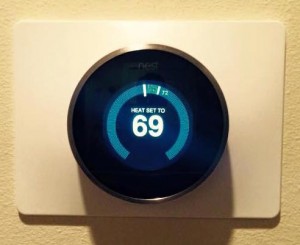
The next morning I set the furnace to 69˚F from my phone before I got out of bed and started getting ready for the day. From 7am until about 10am the furnace turned on and off, on and off, repeatedly, but the house never got any warmer. The Nest itself seemed fine with no errors on screen. I turned the knob up a bit and it said it was heating but still same result. I gave up on it for most of the day thinking maybe it was learning how quickly or slowly the furnace raises the temperature. WRONG!
Later in the evening it was still not working so I Google’d around a bit (yes I use Google so I can use the big G) for this issue and found a few notes in discussion forums. I didn’t find anything useful on Nest’s website (although I searched today, and found this KB article) itself regarding this issue, and calling customer support is always my last resort because I’ve found that most of the time customer support organizations don’t know their own product much better than I can figure out on my own with the Internet at my disposal.
What I did find on the discussion forums indicated that the problem was that there wasn’t enough power available in the control circuit and/or board to fire up the gas burners. And the furnace is designed to shut down the fan and heat cycle after two minutes if the burners haven’t ignited. I also saw several Nest owners comment that they had to call out HVAC repair technicians to figure out what the problem was, presumably at a fairly hefty cost. The good news is that I was able to determine the cause and fix the problem myself, and I’ll describe that here. It’s quite simple, however the caveat is that your house may not have the thermostat wiring in the walls that you need in order to fix it, which means running a new wire, decidedly more involved than if you already have the wiring in place.
First, the ultimate issue is that the Nest consumes more power than a typical thermostat. It has a color screen with backlighting, an actual CPU running an operating system, and a WiFi radio. It also has a rechargeable battery embedded to keep it running when you remove it from its wall base, or when the power is out. The power to run the Nest AND charge the battery comes from the 24VAC Control board in the furnace. Since the Nest uses more current (amperage) than normal and that current comes from the same power source as the current required to turn on relays for the fan and ignite the burners, open gas valves, this is where we get into problems.
The Sequence goes like this…
- The Nest is using power all the time
- If the battery is still charging for some reason it’s using even more power
- At some point Nest decides it’s too cold and sends the Heat signal to the furnace, sending this signal takes some more power
- After the furnace fan has been running for a few seconds it’s time to ignite the burner. This takes a bit more power (close relay to heat up igniter, close relay to open gas valves)
- But now the power in the circuits going through the Nest doesn’t have enough current left to do this, and the voltage has dropped as a result so the relays don’t actually close… and the burners never get gas and/or the igniter doesn’t heat up.
- Two minutes pass and the furnace senses that the burners still aren’t lit and shuts down.
- Lather, Rinse, Repeat
You can determine very quickly with Nest if this is going on by looking at the technical data screen..
Notice the Voc and Vin are wildly different.. this means that the AC sine-wave is fluctuating, ie: voltage is dropping. And the Lin is a current measurement showing 20mA.. According to online discussions this should be around 100ma.
The fix for this is to add power. The most common method of doing that is to connect the blue “C” common wire between the furnace and the Nest. This makes it so that the Nest doesn’t steal/rob it’s power from the same lines that are used to control the heat and fan.
You will notice I already had an extra blue wire in the wall, but it wasn’t in use, so I connected it at both ends.
Now look at the Voc and Vin and Lin values..
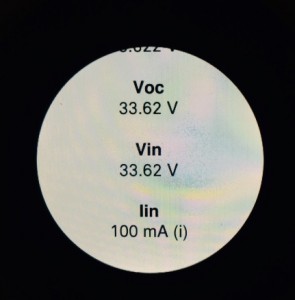 The Voc and Vin are very close, so the AC sine-wave is stable and Lin is 100mA.. This is how it should be and now the furnace works perfectly.
The Voc and Vin are very close, so the AC sine-wave is stable and Lin is 100mA.. This is how it should be and now the furnace works perfectly.
So hopefully if you run into this, now you know how to resolve it. Unfortunately, if you don’t have a spare wire you are going to have to run a new wire through the wall, which will be somewhat, or very, difficult depending on your home.
Being very new, my Nest is a Gen 2 device, and some of the discussions indicated that the Gen 1 devices did not originally have this problem, and then following a software upgrade sometime in the recent past the problem started occurring. The fix was the same.
After this experience I sent some feedback to Nest about this.
- It seems common enough of a problem that it should be mentioned in the install guide. Common issues and their solutions should be readily available to self-install homeowners.
- It also seems like the Nest software could very easily detect this issue. It already monitors the Voc, Vin, and Lin values obviously, and it knows how often the furnace is cycling. It would take very little code to detect the combination of factors and display an alert on the screen and an iPhone notification that there is a power issue, with a knowledge-base article # referenced to read about it. The Nest doesn’t do this so unless you are observant or it’s really cold outside it could linger for days or weeks without you realizing it. And you will find out when it’s really cold, the furnace won’t heat, and you won’t know why.
Otherwise, I think the Nest is pretty slick and I’ll be monitoring to see how it affects my energy bill, if at all.
Footnote: You can type a ˚ on Mac OS X with Option-K or a ° with Option-Shift-8

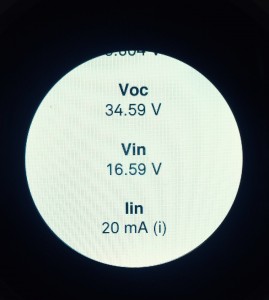
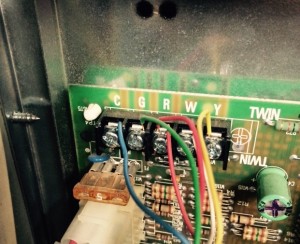
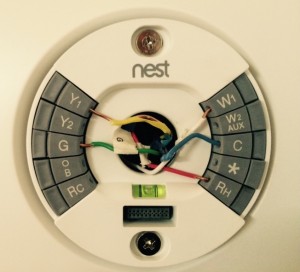
Renaud
December 22, 2015 at 7:36 am
Hi,
This post was super helpful, note that on a 3rd generation that lin value will be 200ma and not 100ma like it is for the 1st and 2nd generation thermostat.
That ecovent startup you’re mentionning, I really want to give it a try, can you please tell me your overall experience with it ? is it worth it ? I would really appreciate it ?
Storagesavvy
December 28, 2015 at 5:13 pm
Unfortunately I have not yet received the Ecovent system. I’m looking forward to it though and will definitely post about it when I do get it. In the meantime I replaced all 8 of my wired smoke detectors with Nest Protects and I’m pretty happy with those. I also added a Kevo by Kwikset to the front door to lock/unlock just by touching with a finger (assuming your phone is in your pocket, etc). So far the Kevo is okay but I’m trying to get the Kevo Plus upgrade which is a bluetooth <-> Wifi router so you can remotely control the Kevo via the Internet. Without the Kevo Plus you can only control the lock within Bluetooth distance.
I should write up a few things about these add ons I suppose.
Renaud
December 22, 2015 at 7:39 am
what is your overall experience with ecovent ? is it worth it ?
Storagesavvy
January 21, 2017 at 10:10 am
Been a while, but I have now had the Ecovent for a while, it’s overall pretty good. I think there is still some work to be done on the app and integration with Nest. I’ve also noticed that they prefer other smart thermostats when developing new features. For example, Ecovent released the concept of schedules (room specific) which you could say is similar to lighting scenes. Basically at different times of day you can set different parts of your house to be climate controlled.. During the day for example, maybe just the main floor is heated/cooled and the bedrooms, etc don’t need to be monitored, then at night, the main floor is ignored while the bedrooms are maintained. Unfortunately this feature is not supported with the Nest Thermostat so I can’t use it.
Ultimately I think Ecovent is pretty slick, and if they release a sort of gen2/version2 of the hardware it’s likely to be pretty solid. My first gen hardware has had a few small issues. I’d like them to modify the sensor hardware so that the back of the sensor that installs onto an outlet is recessed, to accomodate some of the depth of the outlet itself (compared to the wall) and then allow you to screw the sensor into the outlet like a faceplate. The issue I have is that when people plug/unplug items into the outlets on the sensor unit, they are sufficently tight fitting that the whole sensor gets jostled around and pulled out of the outlet.
Also, while the vents are fairly quiet, I’m not sure I can agree with their claim that they are quieter than normal vents. Before installing, our vents were nearly silent when the furnace was running, we really never knew when our furnace was running. With the Ecovent units, we definitely hear the air coming out of the vents now, and the pitch changes as the vent opens/closes due to pressure differences.
Overall, lots of promise, delivers on maintaining temperature throughout the house and not leaving certain rooms too hot or too cold, but could use additional improvement.
Terry
January 21, 2017 at 9:32 am
This thread is old but thought I’d add my comment for others that may be googling this problem. After working great for the first two weeks my nest gen 3 crapped out and is doing this same thing you described. After multiple calls with Nest and doing tons of research on line I have to say this is the best write up diagnosing and addressing this issue. I was showing similar technical numbers as yours (big difference between VOC and VIN and a LIN of 20ma. Nest support diagnosed it as a heat “terminal” issue on the base and had me take it back to the store for an exchange. Of course after reinstalling the new unit I have the same numbers showing.
I’m lucky in that I have an unused blue wire in the wall. Today I’m going to verify if it’s hooked up to the furnace or not and am optimistic I’ll have it all solved today. I think Technical Support should have been able to identify this on my first call just by having me read off my technical numbers to them.
Storagesavvy
January 21, 2017 at 10:12 am
Thanks for the feedback!! I’m very surprised that Nest/Google hasn’t made this issue a top FAQ and been immediately able to diagnose via Support. I still believe they could code a check into the system to detect this and warn people since the VIN/VOC/LIN values are already being monitored and it’s fairly simple math to detect an issue. Oh well..
Terry
January 22, 2017 at 12:06 am
Just a follow up. The blue wire in the wall was unattached at both ends and all I had to do was strip the wire on the ends and attach on the furnace control board C terminal and into the nest. Fixed the problem. My VOC and VIN are identical now and the LIN is showing 200 mA. Battery is consistantly charged at 3.9V and the heat is working. Fingers crossed that this has solved it. So glad I came across your post.
Don R. Queen
March 31, 2017 at 12:34 pm
Thank You for this post, not sure how I hadn’t see it before because I’ve been struggling with the same issues since last summer but my issue is with my AC unit not coming on and in Texas, we run our AC almost year round. Fortunately for me too that I had a spare blue wire which I connected to the Common wire on my HVAC control board and now I’m getting the Lin of 100ma and both the Voc and the Vin are the same on my 2nd Gen NEST.
This unit ran fine almost 3 years and no issue until I starting getting the Low Voltage warn and the AC wouldn’t come on. After changing out parts on my outside AC unit, still had same issues. I gave up as my AC would work and then stop working for up to 48 hours at times (have an upstairs unit with a NEST as well no issues with it) in which case I would take the NEST down and charge it from a USB cable. No issues with it during our short Winter as the heater worked fined but just as soon as I started running the AC again, the Low Voltage, no AC issue started again.
Eric Hiller
August 15, 2017 at 11:35 pm
My situation is even more bizarre . I’ve had the for several years now it’s been fine. Recently my water heater started week and it’s electric.so I get it replaced I’ve been shutting off the water and power by the breaker for the heater .why wouldn’t ask The nest run out of power when the breakers off yet the hvac works normally until the nest is dead. It shows a Lin of 20 with the breaker off and 40 with it on
Eric Hiller
August 15, 2017 at 11:37 pm
Sorry for the typos I was a bit more sleepy than I thought